A Student Pilot Visits a New Airport in Northern California to Practice Landings and Learns the Dangers of Being Hasty.
[This is the 12th in a series of articles detailing my journey to earning a private pilot certificate. Click to read: Part 1, Part 2, Part 3, Part 4, Part 5, Part 6, Part 7, Part 8, Part 9, Part 10, Part 11.]
When I left the office that morning for my flight lesson, I remember feeling uneasy.
My instructor, Dave, had texted me early that morning to let me know that we’d be flying to Nervino Airport for our lesson. Luckily, I had gotten together all the information (field and pattern elevation, AWOS, CTAF, runway pattern directions, etc.) a couple weeks ago, but still I felt nervous. Looking back now, I think maybe I was putting extra pressure on myself because I felt like I had something to prove.
The Early Bird Gets to Be Pilot-in-Command! (…for 3 minutes…)
I arrived early for my lesson and anticipated using the time to spread out my sectional and find some landmarks with which to guide my flight path, in case Dave didn’t want me to use Foreflight or something. But, by the time I pulled into the parking lot, I’d gotten another text:
“Plane needs gas. Can you arrive early and taxi it over and preflight? I’ll meet you at the fuel island.”
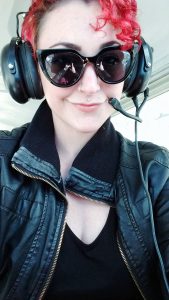
Oh. My. God. If that means what I think it means, he wants me to get into the airplane and taxi it over to the fuel island all by myself! I’ve never been in an airplane with the engine on by myself. I was so excited I was almost skipping over to where the glass cockpit Skyhawk 68F was parked outside of Sierra Aero’s hangar.
I tossed my stuff in the back and did a very thorough pre-flight before hopping into the cockpit and running through the pre-start-up checklist. It felt so weirdly quiet in the cockpit by myself, though by this point in my training, Dave doesn’t usually say anything at this point anyway. I requested the radio check, thanked the Unicom guy who responded, and then announced to Truckee Traffic that I’d be taxiing from Sierra Aero to the fuel island. The whole time, I had this ridiculous smile on my face and couldn’t stop thinking, “That maniac! That maniac is letting me in this airplane by myself!”
I followed the yellow line over to the fuel island, shut ‘er down, and secured the airplane. I was just silly with excitement. I used the big step ladder to fuel up the airplane and was just finishing the second wing as I saw Dave walking across the tarmac toward me. I waved energetically and went about climbing down the ladder.
Pre-Lesson Chat Before Flying to Nervino Airport
After retracting the fuel hose and the little metal clip used to ground the airplane, we started our pre-lesson chat. He had me pull out the sectional, and we called their AWOS phone line and determined which end of the runway to use (Nervino Airport only has one airstrip- runway 8 and runway 26. Runway 8 is right traffic and runway is left.) Dave told me that runway 26 is the preferred runway, but the wind in Nervino was reporting as 6kts coming from 110, making runway 8 the best choice.
During this pre-lesson chat, Dave taught me the “+2/-2” trick for determining runway headings. For example, I remembered that one was runway 8, but couldn’t remember the other side. Dave showed me that if you lay out the heading in three digit format, 080, and either add or subtract 2 to the first two digits (you leave the last digit alone), you can determine the opposite heading. If the heading is less than 180, you add 2 to the first digit, and then subtract 2 from the second digit. So, 080= add 2 to 0, subtract 2 from 8, which gives you 260, or runway 26. And if the heading is equal to or greater than 180, you subtract 2 from the first digit, and then add 2 to the second digit. So, 200 = subtract 2 from 2, add 2 to 0, which gives you 020, or runway 2.
I hope that makes sense! Anyway, after we figured all that out, we hopped into the cockpit and started the engine back up. After listening to AWOS, I determined runway 29 was the best choice, so we made a radio call letting everyone know we were on the roll and followed the yellow line all the way down to the left. We did the run-up, I executed my best clearing turn yet, and then we were chasing the center line all the way to 55kts when I added a little back pressure and peeled us up and away from the earth.
Over the Mountains and Through the Valley- to Nervino Airport We Go!
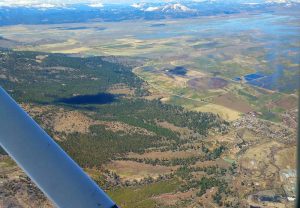
Once we were clear of the runway, we veered right over the bypass for noise abatement and then turned right toward Boca Hill, and then turned left into the valley beyond. Because we were flying a heading close to 335, we flew even-plus-500 (8,500), which got us over the mountains and just under the clouds. It was a little bumpy over the ridge-line, but not too bad.
On the way there, Dave quizzed me about things like cloud clearance and VFR headings, and when I should switch radio frequencies to Nervino. Nervino Airport and Truckee-Tahoe Airport actually share a CTAF, so I just had to remember to switch the AWOS and confirm runway 8 was still the best choice. The whole flight there, I felt like I was going too fast (I was chomping at the bit to make the 10-mile-out radio call), but once we had the airport in sight I felt like I couldn’t respond fast enough. The 5-mile-out call snuck up on me, and then seconds later it felt like I was making the 45 degree turn into the downwind leg of the traffic pattern at something like 85kts! I was going way too fast, and just barely slowed down enough to safely extend the flaps as I was turning base. The runway looked so small and weird, but with Dave’s verbal coaching, we survived a landing that wasn’t as bad as I thought it’d be.
Touch-Down at Nervino Airport
Instead of powering up to go around, we exited the runway and taxied back through the small airport to the end of the runway. Nervino Airport is just a couple hangars and some GA aircraft parked outside. I recognized one of which as a Bonanza, and briefly discussed hangar rental fees with Dave before we made it back to runway 8 and prepared for another lap around the pattern. Back up in the air, we turned downwind, and I focused on trying to slow everything down so the runway wouldn’t sneak up on me again.
Making radio calls to “Nervino Traffic” instead of “Truckee Traffic” tripped me up every time. It just doesn’t have the same flow to it. Luckily for me, the closest pilot flying was in Sierraville, about 15-20 miles away.
Turning final, I knew something was wrong. I was way, way too low, but what I didn’t notice is how slow we were going. It wasn’t until Dave said, “Carly, I want to see my kids tonight,” that I realized how bad of a situation this would be if I was by myself.
Dave talked me through recovering the landing, and we touched down safely and discussed what went wrong as we taxied around to head home. I’d frozen up, which is the number one thing you don’t want to do when flying low and slow. I felt like the failure of that last landing sucked the life out of me, and for the rest of the lesson, I was quiet, trapped in my own mind.
The Beechcraft A36 Bonanza
The Beech Aircraft company was founded in 1932 in Wichita, Kansas, by Walter Beech and his wife Olive. Beech had previously founded Travel Air in 1924, but after they were bought by Curtiss-Wright in 1929 and Beech was moved to a position as VP of Sales, he longed for a return to airplane production. So he quit, founded a new company, and set up shop in an idle Cessna factory. [Read More]
Mountain Winds and GPS Navigation
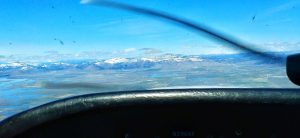
On the way back, Dave had me following the magenta line on the GPS, which was a struggle, especially now that the wind was starting to pick up. Now that we were flying odd-plus-500, I had to decide whether I could clear the mountains at 7,500, or if I should climb to 9,500 and risk the clouds. I asked Dave if I could safely get over the mountains at 7,500, and he gave me a poker-faced response which I took to mean “Yes, but…”
So I started climbing. I made it to about 8,200 before Dave changed his mind and said, “Normally I wouldn’t recommend this, but since I’m here, let’s go over the mountains at 7,500 so you can see why it might not be the best idea.”
I halted the climb, but I didn’t start descending either. I figured I could probably get the picture just fine at 8,200. Dave asked me if I get motion-sickness as we approached the mountains, which (though I don’t) didn’t help allay my concerns.
As I chased the line all over the GPS display, I experienced the worst turbulence I’ve felt so far, which was still not technically that bad. Dave explained that the lower you get, the worse the turbulence will be when there are mountains or even tall buildings disrupting the smooth wind flow. I thought about making a joke about taking his word for it but was too fixated on trying to hold a heading.
The “Point of Saturation”
We approached Truckee, and Dave told me to get down to 7,500 and was trying to give me advice on how to best hold a heading (find the heading, find a spot in the distance, and keep your eyes on that, instead of chasing the line) when I got frustrated and said, “Can I just get to 7,500 first please?”
Dave took the controls and asked me if I was feeling overwhelmed. Then, he explained that one of his goals as an instructor is to get student pilots to the point of saturation, without pushing them over and freaking them out. He told me that it’s important that I experience the stress of having to focus on a lot of different things at once because when I’m flying solo, I can’t just tap out and ask the world to stop while I catch my breath.
As more of these things become second nature, like radio calls and holding an altitude, Dave continued, he’ll add more things to my plate to maintain that learning environment. We entered the pattern to land at Truckee on runway 29, and Dave laughed and reminded me that I need to get a new headset when he noticed I was pressing it against my head, trying to hear the barometric pressure.
Finishing Up and Preparing For the Next Lesson
We landed and taxied back to the Bravo row hangars, where 68F lives, and tucked the plane away. After filling out my logbook and everything, Dave mentioned our flight lesson tomorrow was canceled (a big storm was blowing in) and asked me if I had any questions.
“No, I just gotta do it, you know?” I said, picking up my sectional and notebook which had just fallen out of my headset case. Dave assigned me some homework (making flashcards), and told me I did well, though I didn’t feel like I did. I told him to have a great weekend and got in my car, absentmindedly running through the emergency landing procedure as I picked out a playlist to send me home.
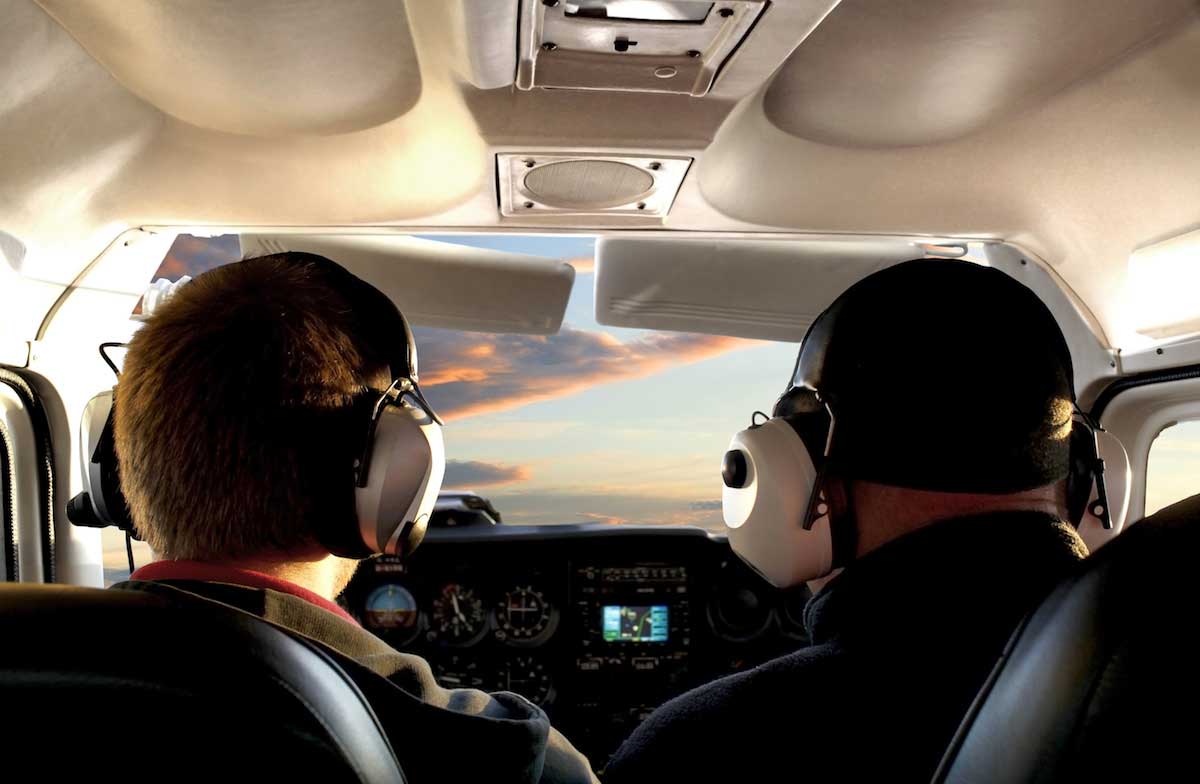 The Benefits of Back Seating, Part One
The Benefits of Back Seating, Part One
If you were to walk into your flight school and ask your instructor for free flying lessons, you would be laughed back into the parking lot from whence you came. However, if you were to ask the same instructor if you could observe one of his lessons from the backseat, you would likely be greeted with enthusiasm. And this time, you would have the last laugh – you just negotiated a free flying lesson. [Read More]






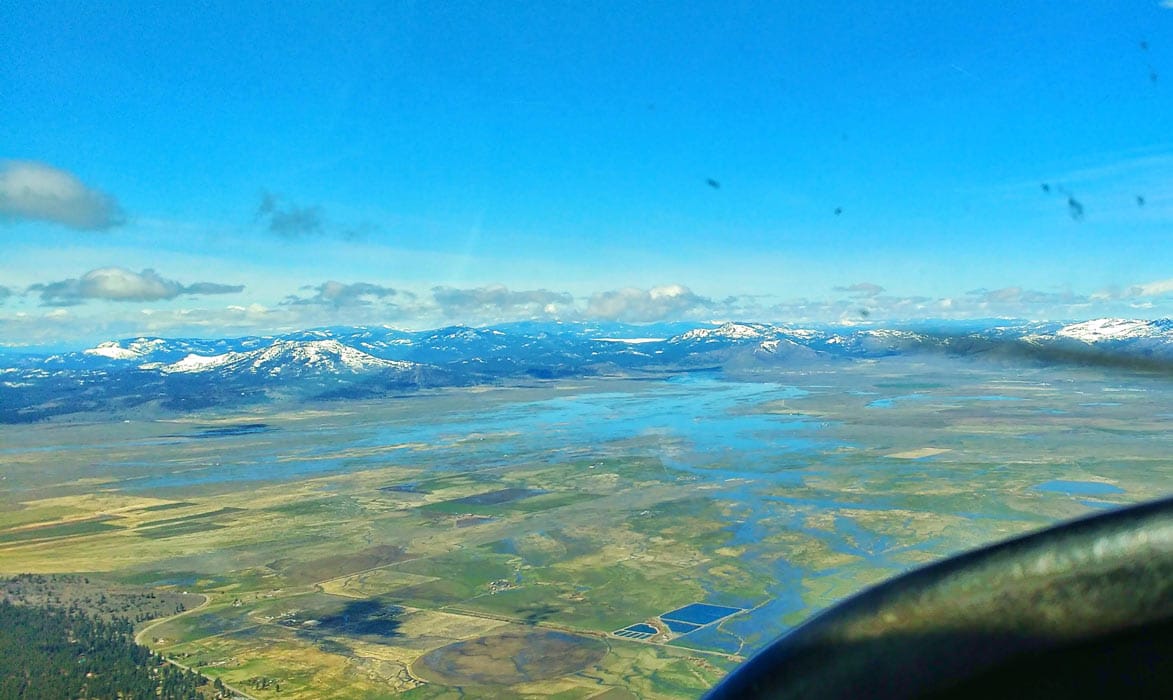

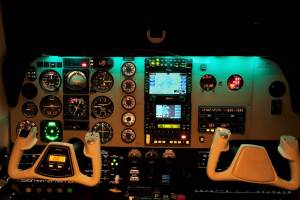







Leave a Reply